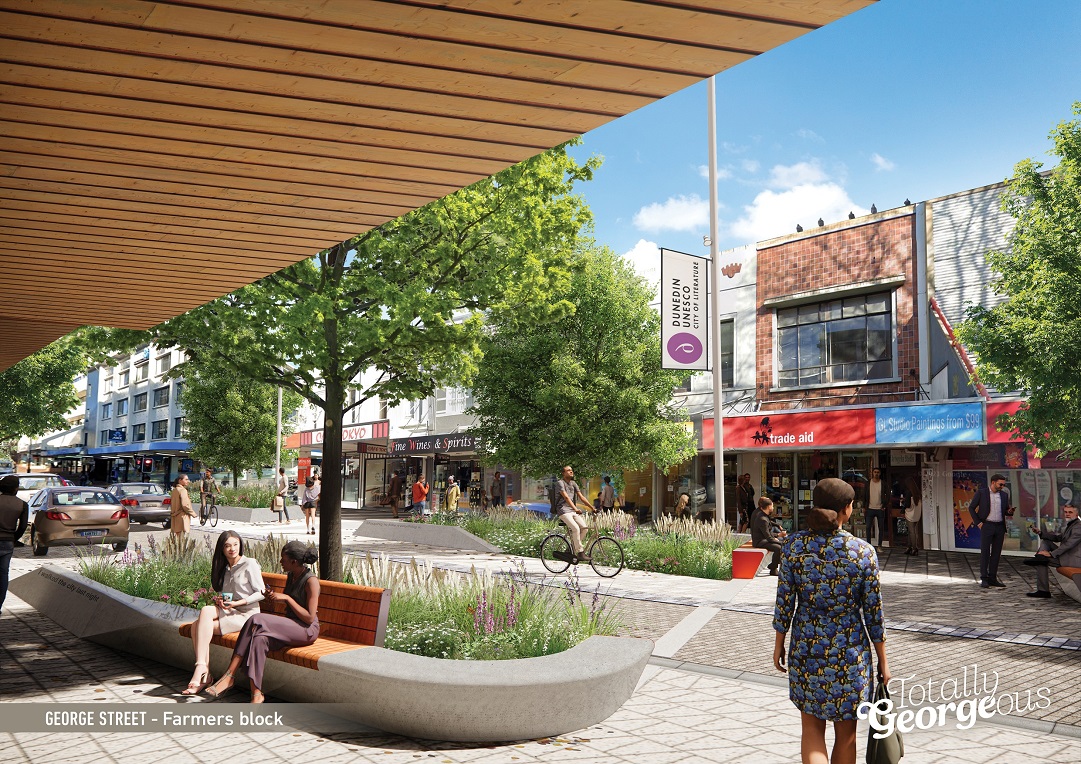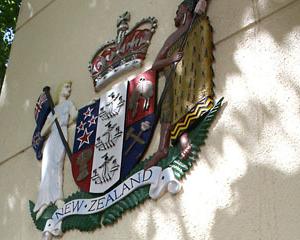Detailed designs for a makeover focused on Dunedin's main shopping street have been largely embraced by the city's elected representatives.
Cr Chris Staynes said the design concept was exceptional, reflecting a genuine effort to work with mana whenua on a major project.
Mayor Aaron Hawkins said the planned $28.2 million upgrade of George St and nearby streets would transform the city centre into an inclusive, accessible destination - not a thoroughfare - for everyone.
Cr Steve Walker said he had seen negative comments, but they were outnumbered by those from "an excited public embracing something truly transformational" - a vision fit for a confident, progressive city.
The designs feature bespoke paving, shared spaces and a cultural narrative recognising the influence of Ngai Tahu.
They were discussed at length during a special meeting of the Dunedin City Council's planning and environment committee today and were mostly received warmly.
Two notable naysayers were councillors and mayoral aspirants Jules Radich and Lee Vandervis and they voted against noting the report that updated the committee on development of the designs.
Cr Radich has been a critic of the planned shift to one-way traffic in George St and what he has described as lack of sufficient attention to the priorities of shop proprietors and shoppers.
The planned street layout was on "the wrong side of history" and it would take the city back to the 1950s, he said.

Cr Vandervis said he was beginning to understand how it was possible to fritter away $28 million on surface treatments for George St.
He could see some advantage in the plans for cafes selling over-priced drinks, but the "supposed upgrade" would create a permanent traffic snarl and constriction of access to George St, he said.
"We need a vibrant retail centre and this plan does not give it to us."
Mr Hawkins said denigration of the hospitality sector, after what it had endured in the past two years because of the Covid-19 pandemic, was a remarkable thing to witness at a city council meeting.
The meeting revealed what seemed to be a shift in sentiment among elected representatives about the upgrade.
Cr Andrew Whiley, who was not a supporter of one-way traffic in George St, said matters had moved on since the council's vote on that in September last year.
"This will be a first-class street," Cr Whiley said.
"I'm heartened by what it's going to look like. I look forward to seeing this completed."
He cautioned people should not wait for the upgrade to finish in 2024 before they provided support for businesses.
"We have to get people to George St now."
Cr Carmen Houlahan, of Ngai Tahu descent, said the project meant a lot to mana whenua.
It was important for Maori to be seen and have their stories told, she said.
Cr Houlahan, another mayoral hopeful, was worried about the wellbeing of business owners and what seemed to be lack of serious recent engagement with them about elements of design.
She has called for a marketing drive to promote the central city.
In a similar vein to Cr Whiley, Cr Rachel Elder said she was impressed by the designs and the amount of space they afforded for creativity.
Te Runanga o Otakou representative Rachel Wesley said mana whenua had sometimes had temporary instances of visibility in the city centre, but the upgrade would make this visibility permanent.
The designs were quintessentially Dunedin and cultural heritage institutions had been incorporated into the streetscape, she said.
Kati Huirapa Runaka ki Puketeraki representative Matapura Ellison said the project was a tangible symbol of a bicultural pathway.
Cr Sophie Barker was one of many councillors who welcomed the involvement of mana whenua.
Cr Marie Laufiso highlighted the importance of relationships, including efforts to repair those that had broken down or that had never been in good shape.
Cr Jim O'Malley said the designs were beautiful and sophisticated.
Cr Walker asked about the cost of carrying out treatment work that would fit with the central city's existing appearance, rather than pursuing the planned revamp.
Council chief executive Sandy Graham said the cost would be about $12 million.
Cr Vandervis did not accept that figure and he expected the makeover to drive some retailers out of the city centre.
Deputy mayor Christine Garey said "a beautiful streetscape for all" would be created.
Cr David Benson-Pope said the design was stunning.
"I think we all know that the community is going to love it."
Some work focused on the replacement of underground pipes has been carried out in the central city since late last year.
Construction work in George St is to start after Anzac Day, beginning in the block between Moray Pl and St Andrew St.
* Earlier reports from the Otago Daily Times suggested underground works were part of the $28.2 million budget for the upgrade. This budget applies to the revamp of the surface, and a separate budget relates to replacement of underground infrastructure.









